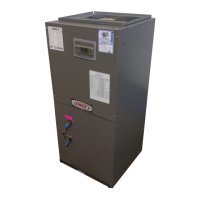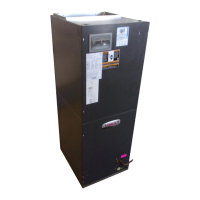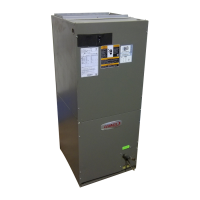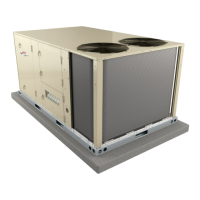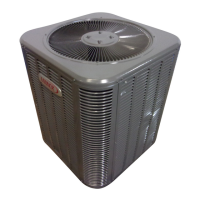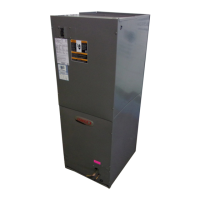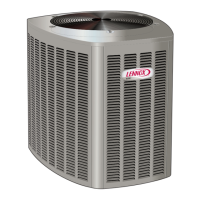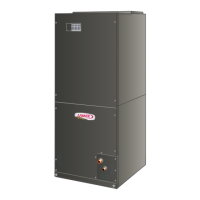507621-01 Issue 1720 Page 11 of 23
Brazing Refrigerant Lines
Refrigerant lines must be connected by a qualied
technician in accordance with established procedures.
Refrigerant lines must be clean, dehydrated,
refrigerant-grade copper lines. Air handler coils should
be installed only with specied line sizes for approved
system combinations.
Handle the refrigerant lines gently during the installation
process. Sharp bends or possible kinking in the lines
will cause a restriction.
Do not remove the caps from the lines or system
connection points until connections are ready to be
completed.
IMPORTANT
Polyolester (POE) oils used with HFC-410A refrigerant
absorb moisture very quickly. It is very important that the
refrigerant system be kept closed as much as possible.
DO NOT remove line set caps or service valve stub
caps until you are ready to make connections.
WARNING
Danger of re. Bleeding the refrigerant
charge from only the high side may result in
the low side shell and suction tubing being
pressurized. Application of a brazing torch
while pressurized may result in ignition of the
refrigerant and oil mixture - check the high
and low pressures before unbrazing.
WARNING
When using a high pressure gas, such as dry
nitrogen, to pressurize a refrigeration or air
conditioning system, use a regulator that can
control the pressure down to 1 or 2 psig (6.9
to 13.8 kPa).
WARNING
To prevent the build-up of high levels of nitrogen when
purging, be sure it is done in a well ventilated area.
Purge low pressure nitrogen (1 to 2 psig) through
the refrigerant piping during brazing. This will help to
prevent oxidation and the introduction of moisture into
a system.
IMPORTANT
Brazing alloys and ux contain materials which are
hazardous to your health.
Avoid breathing vapors or fumes from brazing
operations. Perform operations only in well ventilated
areas.
Wear gloves and protective goggles or face shield to
protect against burns.
Wash hands with soap and water after handling brazing
alloys and ux.
CAUTION
NOTE: Recommended line length is 50’ or less. If more
than 50’ line set is required, contact Technical Services.
1. Route the suction and liquid lines from the ttings on
the indoor coil to the ttings on the outdoor unit. Run
the lines in a direct path, avoiding unnecessary turns
and bends.
2. Make sure that the suction line is insulated over the
entire exposed length and that neither suction nor
liquid lines are in direct contact with oors, walls, duct
system, oor joists, or other piping.
3. Connect the suction and liquid lines to the evaporator
coil. Take care to protect the cabinet and internal
components as detailed in gure 14.
4. To avoid damaging the rubber grommets in the cabinet
while brazing, slide the rubber grommets over the
refrigerant lines until they are away from the heat
source.
NOTE: Place wet rags against piping plate and around
suction line connections.
5. Braze using an alloy of silver or copper and phosphorus
with a melting point above 1,100°F (593°C).
NOTE: Do not use soft solder.
6. Allow refrigerant pipes to cool to room temperature.
NOTE: Make sure to route copper refrigerant tubing
away from sharp edges and make sure that it does
not touch other metal surfaces. This prevents damage
caused by vibration or metal-on-metal contact.
7. Reinstall the rubber grommets into the refrigerant
piping panel.
NOTE: Make sure expansion valve capillary tube is
not touching metal edges or copper tubing.
8. Make sure outdoor unit has been placed according
to the Installation Instructions and is connected to the
refrigerant lines.
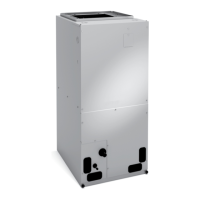
